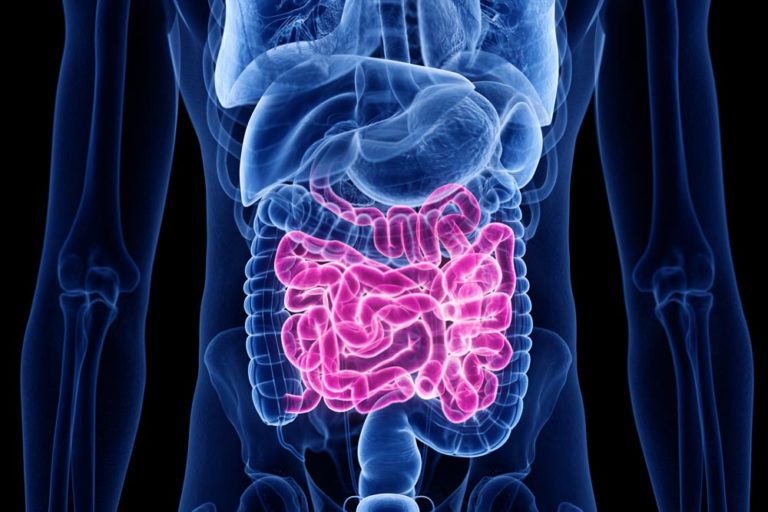Metabolism
Medical Studies on Pregnenolone – Metabolism

Pancreatic beta cells play a key role in diabetes mellitus. In this process, proinflammatory cytokines activate signaling pathways that can then lead to beta cell damage and death. Pregnenolone promotes healthy beta cell function in the pancreas and ensures the healthy physiological release of insulin, thanks to its anti-inflammatory properties.
Pregnenolone for Metabolic Disorders
Treatment with pregnenolone can be especially helpful for people over 40 who want to keep their blood glucose levels in the normal range; occasionally, it is also suitable for younger candidates with similar complaints. Studies have shown that pregnenolone supports the metabolic work of beta cells and can even renew these cells.
DHEA and Melatonin
Taking DHEA along with pregnenolone can enhance the effect of both substances, as pregnenolone is a direct precursor of DHEA. In studies, this has been shown to have a positive effect on insulin, sugar and fat metabolism and to exert a protective effect against insulin resistance. Pregnenolone can also be effectively used in conjunction with melatonin. Together they enhance each other’s ability to promote healthy insulin secretion and also provide energy balance while promoting stress control and recovery.
Medical Studies on Pregnenolone – Metabolism
Zusammenhang zwischen Dehydroepiandrosteron-Sulfat-Spiegeln und Atherosklerose bei Patienten mit subklinischer Hypothyreose
2021-03 Gonulalan G, Tanrıkulu Y
Subklinische Hypothyreose ist mit einem erhöhten Risiko für kardiovaskuläre Erkrankungen verbunden. Die verminderten Spiegel von Dehydroepiandrosteron-Sulfat (DHEA-S) werden mit Hyperlipidämie, Atherosklerose und Adipositas in Verbindung gebracht. Die niedrigeren DHEA-S-Spiegel könnten ein wichtiger Faktor bei der Entwicklung von Atherosklerose bei subklinischer Hypothyreose sein.
Die Rolle der Endocannabinoide bei der Regulierung des Energiehaushaltes bei Teilnehmern im post-adipösen Zustand − eine PREVIEW-Studie
2020-07 Drummen M, Tischmann L, Gatta-Cherifi B, Cota D, Matias I, Raben A, Adam T, Westerterp-Plantenga M
Es wird angenommen, dass Endocannabinoide eine Rolle bei der Regulierung des Energiehaushalts spielen. Wir wollten die Assoziationen der Endocannabinoid-Konzentrationen während des Tages mit der Energiebilanz und der Adipositas und die Wechselwirkungen mit 2 Ernährungsformen, die sich im Proteingehalt unterscheiden, bei Teilnehmern in der postadipösen Phase mit Prädiabetes untersuchen.
Dehydroepiandrosteron im Stoffwechsel und im kardiovaskulären System in der postmenopausalen Phase
2020-01 Teixeira CJ, , Veras K, , de Oliveira Carvalho CR
Dehydroepiandrosteron (DHEA), das meist als sein sulfatierter Ester (DHEA-S) vorliegt, ist ein anaboles Hormon, das mit dem Alter natürlich abnimmt. Außerdem ist es die am häufigsten vorkommende Androgen- und Östrogenvorstufe im Menschen.
Adrenocorticotropin reguliert akut die Produktion von Pregnenolonsulfat durch die menschliche Nebennieren in vivo und in vitro
2018-01 Rege J, Nanba AT, Auchus RJ, Ren J, Peng HM, Rainey WE, Turcu AF
Dehydroepiandrosteronsulfat (DHEAS) ist das am häufigsten vorkommende Steroid im menschlichen Kreislauf und das adrenokortikotrope Hormon (ACTH) gilt als Hauptregulator seiner Synthese. Pregnenolonsulfat (PregS) und 5-Androstendiol-3-Sulfat (AdiolS) haben sich in jüngster Zeit als Biomarker für Nebennierenerkrankungen etabliert.
Steroidhormon-Profiling bei fettleibigen und nicht fettleibigen Frauen mit polyzystischem Ovarialsyndrom
2017-10 Deng Y, Zhang Y, Li S, Zhou W, Ye L, Wang L, Tao T, Gu J, Yang Z, Zhao D, Gu W, Hong J, Ning G, Liu W, Wang W
Die Studie untersuchte Unterschiede im steroidogenen Stoffwechselweg zwischen adipösen und nicht-adipösen Frauen mit dem polyzystischen Ovarsyndrom (PCOS) mittels Flüssigchromatographie-Tandem-Massenspektrometrie (LC-MS / MS).
TRP- (Transient receptor potential) M3-Kanäle sind ionotrope Steroidrezeptoren in Betazellen des Pankreas
2008-12 Wagner TF, Loch S, Lambert S, Straub I, Mannebach S, Mathar I, Düfer M, Lis A, Flockerzi V, Philipp SE, Oberwinkler J
TRP- (Transient receptor potential) Kationenkanäle sind bekannt für ihre Fähigkeit, verschiedene chemische Reize zu erfassen.
PPARs und PXRs: xenobiotische Kernrezeptoren, die neue Signalübertragungswege für Hormone definieren
1999-01 Kliewer SA, Lehmann JM, Milburn MV, Willson TM
Traditionelle pharmakologische Ansätze hatten mehrere Klassen von Xenobiotika identifiziert, die in vivo charakteristische biologische Effekte hervorrufen, denen aber definierte molekulare Wirkmechanismen fehlen.